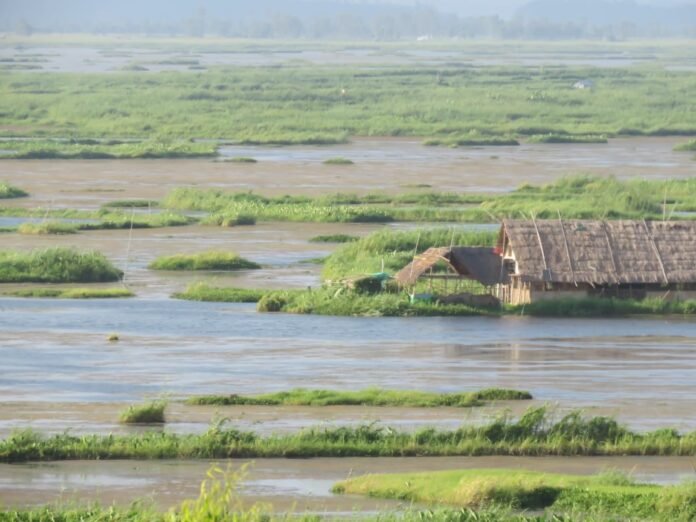In Manipur’s Bishnupur district, a beloved freshwater wonder called Loktak Lake is under threat, says a new study from Nagaland University. The research warns that changing land use—especially rising agriculture, more settlements, and slash‑and‑burn farming—has worsened the water quality of the rivers that feed into the lake. The findings could help protect the lake’s rich wildlife and the people who depend on it.
Loktak Lake is a national treasure. It hosts 132 plant species and 428 animal species, and it is a Ramsar wetland of international importance. The lake supports hydropower, fishing, local transport, and tourism. Yet, in recent years it has been listed on the Montreux Record, a global warning list for wetlands suffering serious damage.
The Nagaland University team, led by Dr. Eliza Khwairakpam of the Environmental Science department, studied nine main rivers – Khuga, Western, Nambul, Imphal, Kongba, Iril, Thoubal, Heirok, and Sekmai – that flow into Loktak. Using detailed land‑use maps, the scientists linked how land activities such as farming, forest loss, settlements, and “Jhum” shifting cultivation affect water quality indicators including dissolved oxygen (DO), biological oxygen demand (BOD), and temperature.
“Our research shows that land use decisions upstream directly influence the water Downstream,” Dr. Khwairakpam explained. “Community‑based land management and tighter control of agricultural runoff and waste discharge are essential to restore the lake.”
Raw data reveal striking differences. The Nambul River is the most polluted, with low oxygen and high organic contamination, linked to 47% agricultural land and 11% settlement areas in its catchment. The Khuga River also displays poor water quality, driven by 42% Jhum cultivation, even though it has more forest cover. In contrast, rivers like Iril and Thoubal, which flow through largely forested landscapes, show better oxygen levels, showing how natural vegetation protects water quality.
The study was backed by Manipur’s Forest Department, the Pollution Control Board and supported jointly by Nagaland University and IIT Delhi. Vice President Prof. Jagadish K. Patnaik highlighted the study’s importance: “Our faculty’s work shows the clear link between land use and water pollution in the Loktak catchment. This is a call to action for sustainable agriculture, forest conservation, and regulated Jhum cycles to protect the lake and its endangered Sangai deer habitat.”
With rising fish declines, increasing pollution, and more sediment, the research underscores that protecting Loktak Lake is not just an environmental duty but a vital livelihood safeguard for Manipur’s people. The findings will inform policy and help communities make greener choices that keep the iconic lake healthy for generations.
Source: ianslive
Stay informed on all the latest news, real-time breaking news updates, and follow all the important headlines in world News on Latest NewsX. Follow us on social media Facebook, Twitter(X), Gettr and subscribe our Youtube Channel.



